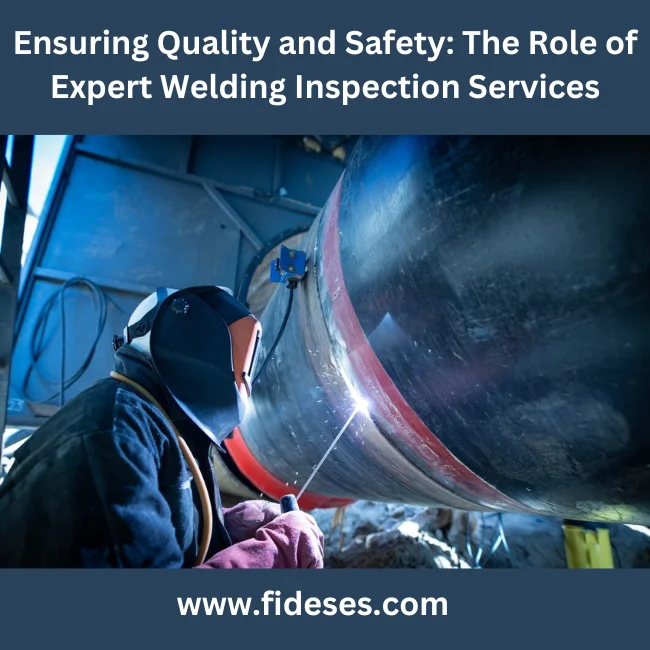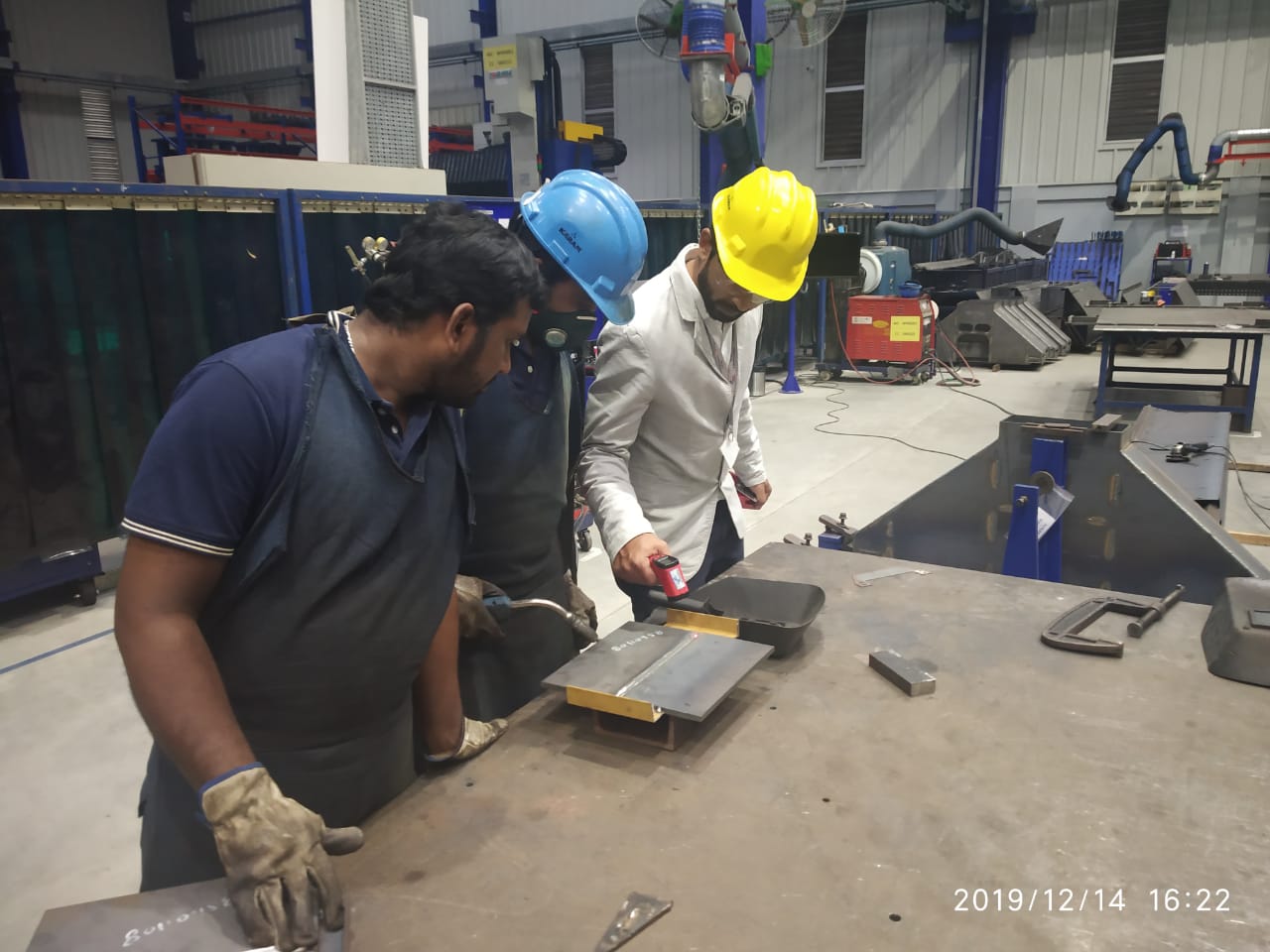A Comprehensive Overview to Welding Inspection Madison Standards
A Comprehensive Overview to Welding Inspection Madison Standards
Blog Article
Exploring Advanced Devices and Techniques for Accurate Welding Assessment
In the world of welding inspection, the search of precision and dependability is critical, stimulating the advancement of sophisticated tools and techniques. Laser scanning developments and automated inspection systems, outfitted with fabricated knowledge, are redefining the landscape by decreasing human error and boosting safety actions.
Ultrasonic Examining Innovations
Ultrasonic testing technologies often stand for the leading edge of innovations in welding examination innovations. These technologies have considerably improved the capacity to identify and assess discontinuities within bonded structures, ensuring improved honesty and safety - Welding Inspection Madison. Ultrasonic testing utilizes high-frequency sound waves to permeate materials, giving comprehensive information concerning inner features without creating damages. The most recent advancements in this field have focused on boosting accuracy, rate, and the ability to analyze complex data.

Furthermore, developments in software formulas for information analysis have actually enhanced the accuracy of problem detection and sizing. Automated ultrasonic screening systems currently supply high-resolution imaging, making it possible for in-depth assessments of weld quality. These systems are often integrated with sophisticated visualization tools, which promote the analysis of outcomes.
Radiographic Inspection Methods
While ultrasonic screening advancements have actually set a high criterion in non-destructive assessment, radiographic assessment strategies proceed to play an indispensable duty in welding inspection by supplying one-of-a-kind insights into material honesty. Radiographic screening (RT) uses making use of X-rays or gamma rays to permeate materials, developing a radiograph that visually stands for the interior structure of a weld. This imaging capacity is invaluable for finding subsurface flaws such as porosity, incorporations, and splits that may not show up through surface evaluations.
The process involves positioning a radiation source on one side of the weld and a detector on the contrary side. Variations in material thickness and density impact the depletion of the rays, producing a different photo that exactly defines imperfections. RT is particularly beneficial for inspecting thick areas and complex geometries where various other methods may fail.
Regardless of its effectiveness, radiographic evaluation has to be carried out with strict adherence to safety and security procedures as a result of the harmful nature of ionizing radiation. Moreover, the interpretation of radiographs needs knowledgeable personnel, as the top quality of the analysis straight impacts the reliability of the evaluation. Ongoing advancements in digital radiography are enhancing photo clearness and analysis effectiveness, enhancing RT's crucial role in ensuring weld quality.
Laser Scanning Developments
Embracing laser scanning innovation in welding assessment has actually changed the assessment of weld high quality and integrity. Unlike standard assessment methods, laser scanning supplies fast information procurement, dramatically enhancing the efficiency and precision of weld examinations.
Laser scanning breakthroughs have actually resulted in considerable go now renovations in identifying and discovering surface problems such as porosity, lack of fusion, and undercuts. The high-resolution data enables inspectors to perform thorough evaluations, making certain that welds satisfy stringent industry criteria. In addition, this approach supports the development of electronic documents, promoting long-term high quality assurance and traceability.
Furthermore, laser scanning modern technology integrates flawlessly with software program solutions made for automated flaw detection and analysis. The resultant information can be conveniently shared and assessed, promoting collective decision-making procedures. As sectors proceed to demand greater requirements for weld high quality, laser scanning continues to be at the center, providing unmatched accuracy and efficiency in welding inspection.
Automated Evaluation Systems

Automated assessment systems use the benefit of consistency, eliminating human mistake and subjectivity from the assessment process. They are developed to operate in different settings, from production floorings to remote area websites, making sure thorough insurance coverage. Welding Inspection Madison. These systems can be programmed to comply with certain welding standards and criteria, providing Full Article detailed records and documentation for quality assurance objectives
In addition, the assimilation of cloud-based systems helps with the storage and evaluation of huge amounts of examination information. This makes it possible for fad evaluation and predictive upkeep, allowing makers to deal with prospective problems prior to they rise. The adoption of automatic examination systems is a critical step in the direction of enhancing the dependability and effectiveness of welding procedures in industrial applications.

Enhancing Safety And Security and Performance
A significant facet of enhancing safety and performance in welding inspection hinges on the integration of ingenious modern technologies that improve operations and minimize dangers. The adoption of sophisticated non-destructive testing (NDT) methods, such as ultrasonic screening, phased selection ultrasonic testing (PAUT), and radiographic screening, plays an essential role in guaranteeing structural honesty without compromising the security of the employees involved. These techniques enable thorough evaluations with very little downtime, minimizing potential hazards related to standard approaches.
Moreover, the execution of real-time data analytics and machine understanding algorithms has actually transformed the way evaluation data is analyzed. By employing anticipating analytics, potential issues can be recognized prior to they show up into critical failings, making sure timely interventions and upkeep. This proactive strategy significantly improves operational effectiveness and safety in welding procedures.
Furthermore, remote evaluation modern technologies, consisting of drones and robot crawlers equipped with high-resolution video cameras, allow assessors to assess hard-to-reach areas without subjecting them to hazardous problems. This not only boosts assessment precision however additionally minimizes human risk. By leveraging these advanced devices and techniques, markets can accomplish higher safety and security standards and functional performance, inevitably bring about even more sustainable and trustworthy welding inspection practices.
Final Thought
The combination of advanced devices and methods in welding evaluation considerably boosts flaw detection and guarantees architectural stability. Welding Inspection Madison. Developments such as phased array ultrasonic screening, electronic radiography, and laser scanning enhance issue characterization, while automated examination systems and AI minimize human mistake. Remote innovations promote risk-free evaluations in hazardous atmospheres, promoting a proactive upkeep approach. These improvements not only boost inspection efficiency however additionally add to boosted safety and quality control in industrial welding applications.

Ultrasonic testing advancements often represent the leading edge of innovations in welding examination modern technologies.While ultrasonic screening developments have set a high requirement in non-destructive exam, radiographic assessment methods proceed to play an integral role in welding evaluation by using special insights into material honesty.Embracing laser scanning modern technology in visit this website welding evaluation has actually transformed the assessment of weld top quality and honesty. As sectors proceed to require greater requirements for weld high quality, laser scanning stays at the leading edge, using unmatched accuracy and efficiency in welding inspection.
Automated evaluation systems provide the benefit of consistency, removing human mistake and subjectivity from the assessment process.
Report this page